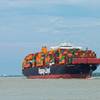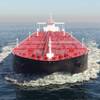Collision: Every Mariner's Nightmare
By James P. Nader & Joseph A. Poblick
Collision law can be traced back to ancient Roman times and developed further during the industrial revolution in England. In more modern times there have been numerous efforts by the international community to establish a uniform set of guidelines and rules governing safety at sea. Some of the navigational rules which have developed include the use of light and sound signals, radar, speed regulations, lookouts and observance of standards of good seamanship. General customs of navigation are also an important consideration, but do not carry the weight of the rule of law. If a general and even widely accepted custom is contrary to the law it will not be enforced.
Under maritime law, a vessel which drifts into a collision is presumed to be at fault, however, this presumption may be rebutted by the moving vessel by a preponderance of evidence. Under what is known as the "Pennsylvania Rule," when a vessel's negligence is in violation of a statute, the offending vessel must establish that its conduct did not and could not have caused the collision. The "Oregon Rule," provides that a moving vessel is at fault for a collision with an anchored vessel or a fixed object and such a collision establishes a prima facia case of negligence against the moving vessel. Under this rule a vessel may escape liability only by proving that it was without fault, the stationary object was at fault, or the collision was the result of an unavoidable accident. However, this is a difficult presumption to overcome. In instances where both parties bear some responsibility for the collision, the courts will employ the doctrine of comparative negligence, which will proportion fault among the parties and therefore reduce the plaintiff's damages by their degree of fault.
A recent case from the U.S. District Court for the Eastern District of Missouri, American River Transportation Co., Inc. v. Paragon Marine Services, Inc. dealt with a barge which drifted from her moorings and collided with numerous vessels down river. In that case the "Barge" broke away from her moorings and drifted downstream and collided with other barge fleets, which were moored to the river banks, ultimately loosening 137 barges. The plaintiff operated barge fleets along the upper Mississippi River. The defendant operated a barge fleet up river from the plaintiff. The "Barge" was delivered and placed into the main fleet where it was secured at the head of the fleet. Subsequently, the "Barge" was shifted by the defendant's tug boat. After the removal of several barges from the fleet, the "Barge" was placed back into the fleet. The tug's crewmembers never inspected the moorings of the "Barge" to assure that they were still intact. Later that evening the "Barge" came free of its moorings and drifted down river.
As the "Barge" drifted it struck a fleet of barges, owned by the plaintiff, down river knocking additional barges out of that fleet. Those loose barges also drifted down river and knocked more barges from additional fleets, also owned by the plaintiff. A total of 137 barges were knocked loose. Approximately fifteen tugboats responded to the breakaway barges.
The Court in this case applied what is known as the "Louisiana Rule." The "Louisiana Rule" provides that when a collision is caused by a vessel drifting from her moorings, the moving vessel is presumed to be at fault unless affirmative proof shows an inevitable accident or vis major(act of God), which human skill and precaution could not have prevented. Legal responsibility for proper mooring rests with the fleet operator or moored vessel; therefore they have the burden of proving the unavoidability of the accident, which was not established in this case.
The Court found that the defendant (the upriver barge fleet operator) was responsible for the resulting accident, due in part to its failure to maintain a formal safety program or written procedures for mooring and inspecting barges. The defendant's representative testified that the company had no written policies on how crew members were to secure barges, when barges were to be inspected, or any safety measure to be taken during an event such as the case at hand. Moreover, the defendant submitted no evidence of any extraordinary event or vis major which caused the "Barge" to break free. The affirmative defense of vis major requires the complete exclusion of human involvement from the injury. This defense also requires that a force of nature is so inevitable and irresistible that man can't foresee or protect from it. Additionally, no evidence of an inevitable accident was submitted to the court. The party arguing inevitable accident has a high burden to establish that the accident could not have been prevented. However, the defendant failed to produce any evidence that the accident was inevitable.
Under the doctrine of res ipsa loquitor the defendant was unable to rebut the presumption that their negligence caused the Barge to break away from its mooring. Res ispa loquitur requires satisfaction of three elements: 1) the injured party was without fault; 2) the instrumentality causing the injury was under the exclusive control of the defendant; and 3) the injury is of a type that ordinarily does not occur in the absence of negligence. Based on the facts of this case each element was satisfied. The fleeted barges downstream were not at fault, the drifting barge was under the exclusive control of the defendant, and a drifting barge colliding with moored barges does not typically occur without negligence.
When an incident such as this occurs it is imperative to quickly gather all the facts. Prompt collection of all evidence is necessary to prepare for the litigation that will follow a maritime collision. It is important to review all relevant ship's documents, logs, records of communications, etc. in order to fully understand what occurred. Statements of crew and witness should be undertaken as soon as practicable. Once a collision has occurred, the injured party will inevitably seek damages. What type of recovery depends on the extent of the damage to the vessel, total loss or partial damage. If the vessel is a total loss, the measure of damages would typically be the market value of the ship plus interest and freight, less the salvage value. However, if the ship only suffered relatively minor damage the measure would be different. If the vessel is not a total loss, the owner is entitled to the reasonable cost of repairs to bring it to pre-accident condition. Incidental costs associated with the accident may also be recovered, as well as lost profits while the vessel is being repaired.
The importance of safety can not be stressed enough. Maritime work is an inherently dangerous profession, and it is the responsibility of everyone to help limit the risks. Owners and operators alike need to implement and maintain a formal safety program, conduct regular safety meetings, and provide adequate training to employees. In the long run it is cheaper to prevent an accident than pay for the aftermath.
About the Authors
James Nader is a partner and Joseph A. Poblick is an associate with the law firm of Lobman, Carnahan, Batt, Angelle & Nader in New Orleans, La. Mr. Nader's trial practice over the last eighteen years has included Admiralty and Maritime Law, an area in which he is an adjunct professor at Tulane University. Mr. Poblick's primary practice areas include admiralty, maritime law, and insurance defense. For more information on the firm, please see its Website at www.lcba-law.com, or contact them at 400 Poydras St., Suite 2300, New Orleans, LA 70130, phone (504) 586-9292.**
**This article is for general information and educational purposes only, and should not be construed as legal advice. The authors are available to discuss any specific questions or concerns regarding any issues related to this article.













